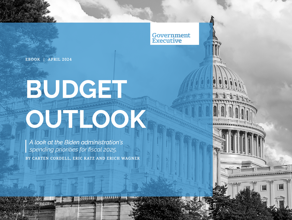NASA chief sets leadership example, report says
Federal managers could learn a lot from the example set by Daniel Goldin, NASA's longest-serving administrator, according to a new report. Goldin has guided the agency through major reform and into the 21st century by adapting his management style to suit the needs of the organization, the report, "Transforming Government: Dan Goldin and the Remaking of NASA," said. The report was published by the PricewaterhouseCoopers Endowment for the Business of Government.
Goldin, who was appointed in 1992 by President George H. W. Bush and is still at the helm, "shook up the agency" when he came aboard, according to report author W. Henry Lambright, a professor of political science and public administration at Syracuse University's Maxwell School of Citizenship and Public Affairs. "In the history of NASA, Goldin will likely stand out as a man who preserved the agency by forcing it to change," said Lambright. While his tenure has been marked by both successes and failures, Goldin's legacy will be his ability to capitalize on accomplishments, learn from failures and adapt his management style accordingly, the report said. "He worked intensely, was quite intelligent, learned quickly about Washington politics, and was utterly relentless in pursuit of his aims," said Lambright. "He has lasted a long time in office, outlasting many of his adversaries." According to the report, Goldin's success as an agency leader is due to his ability to:
- Align a long-term mission with short-term goals: Goldin viewed space exploration as NASA's primary mission, but knew that maintaining NASA's management and technological innovations would be the means to that end.
- Use adversity and crisis as opportunities for change: Budget cuts and the fate of the international space station were some of the trials Goldin used to build a constituency of support for his leadership and NASA, and to reform the agency.
- Identify agency weaknesses: Goldin used independent panels to assess NASA's problems and solutions, and eventually used that strategy to modify his own administrative style, which had contributed to communication problems within the agency.
NEXT STORY: Outsourcing panel agrees to ground rules



